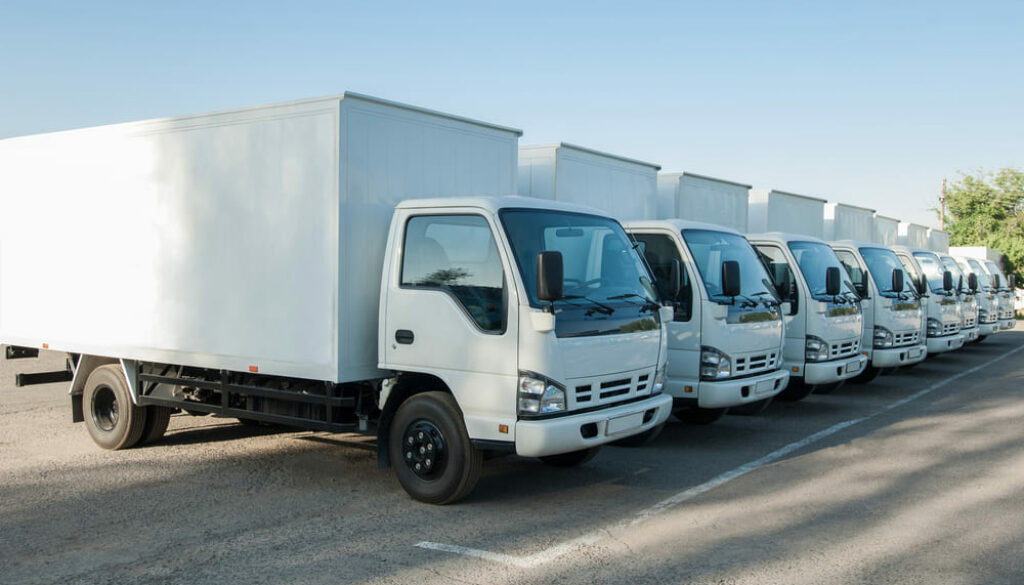Truck Logistics: Optimization, Costs, and Trends in Land Transport
Truck logistics is a fundamental pillar in land transport and the global supply chain. From product distribution to route optimization, truck management is key to ensuring goods reach their destination efficiently and profitably.
In a world where the demand for fast and economical deliveries continues to grow, companies are constantly looking to improve their logistics processes. But what does truck logistics really involve, and how can it be optimized to reduce costs without affecting service quality?
This article delves into how truck logistics works, the main types of transport, optimization strategies, and future trends that are revolutionizing the industry.
How Truck Logistics Works
Truck logistics encompasses all the processes needed to move goods from an origin point to their final destination. This system involves meticulous planning, which includes:
- Fleet management: Control of available vehicles, maintenance, and route assignment.
- Route planning: Selecting the most efficient route based on distances, traffic, and costs.
- Loading and unloading: Efficient handling of products to reduce waiting times.
- Real-time tracking: Use of GPS and management software to monitor deliveries.
- Coordination with warehouses: Synchronization with distribution centers to optimize time.
A key point in truck logistics is the optimization of cargo space. Companies strive to maximize the capacity of each truck, avoiding trips with wasted space, which reduces costs and carbon emissions.
Moreover, automation has revolutionized the sector with tools like transportation management software (TMS), which helps coordinate routes, assign loads, and improve transportation efficiency.
Types of Truck Transport
There are different types of land transport based on the type of cargo and distance traveled. Some of the most common types are:
Full Truck Load (FTL)
Ideal for large volumes of cargo.
A full truck is used for a single customer.
Reduces delivery times by avoiding load consolidation.Less than Truck Load (LTL)
Perfect for small and medium-sized companies.
A single truck transports goods from multiple customers.
Reduces costs by sharing cargo space.Refrigerated Transport
Used for perishable food, medicines, and chemicals.
Equipped with temperature-controlled systems.
Requires strict planning to avoid losses.Last Mile
Final stage of delivery to the consumer.
Key in e-commerce and fast deliveries.
Involves vans and small vehicles for urban mobility.
Each type of transport has advantages and challenges. While full truck load is faster and more direct, less than truck load allows for cost savings by sharing space. Truck logistics needs to choose the most suitable option depending on the cargo, budget, and delivery times.
Route and Cost Optimization in Land Transport
Route optimization is one of the most effective strategies for reducing costs and improving delivery times. To achieve this, companies use various tools and tactics:
- Route planning software: Use of AI and Big Data to calculate the most efficient route.
- Real-time traffic analysis: Avoids traffic jams and reduces fuel consumption.
- Load consolidation: Maximizing the available space in each truck.
- Reduction of empty miles: Strategies to avoid trucks running without cargo.
- Use of alternative fuels: Implementation of electric and natural gas trucks.
The digitalization of logistics has allowed companies to be more competitive. Advanced platforms like TMS (Transportation Management Systems) optimize vehicle allocation, reduce waiting times, and improve the efficiency of each trip.
Challenges in Truck Logistics
Despite its benefits, the sector faces multiple challenges:
High fuel costs
The price of diesel directly impacts operational costs. Many companies are investing in alternative fuels to reduce expenses.Regulations and standards
Each country has different regulations on road safety, emissions, and driving times, which can complicate logistics planning.Driver shortage
The lack of professionals in the sector has led to an increase in salaries and the search for alternatives such as automation.Sustainability and carbon footprint
Companies are looking for eco-friendly solutions to reduce their environmental impact, such as using electric trucks and optimizing transport.
Trends and Future of Land Transport
Truck logistics is evolving with new technologies and approaches that promise to revolutionize the industry:
- Autonomous vehicles: Large companies are investing in driverless trucks to improve efficiency and reduce costs.
- Sustainability: Use of electric trucks, biofuels, and green logistics strategies.
- Blockchain in logistics: Technology that guarantees greater transparency in the supply chain.
- Automation and robotics: Reduction of loading and unloading times with automated systems.
The future of truck logistics will be marked by digitalization, sustainability, and automation. Companies that adopt these trends will be the most competitive in the global market.
Conclusion
Truck logistics is a key sector in the supply chain and global trade. Its efficiency depends on good route planning, cost optimization, and the use of advanced technology.
Companies must face challenges such as fuel costs and the shortage of drivers, but they also have opportunities for improvement with digitalization, autonomous vehicles, and sustainable logistics.
In an increasingly globalized world with higher demand for fast deliveries, truck logistics continues to evolve. Adapting to these new trends will not only reduce costs but also ensure a more efficient and sustainable service.




